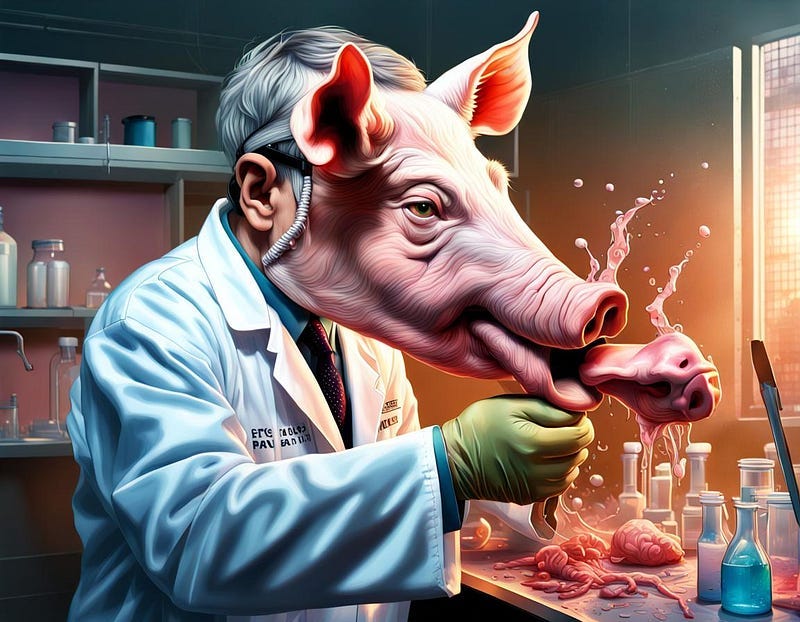From numbers to nature

The symbiotic relationship of numbers and nature has long been a subject of fascination for scientists and scholars alike.
Whereas biology is a discipline traditionally associated with the study of living organisms and their interactions, the role of mathematics might seem unexpected to the uninitiated. However, examining this intersection reveals a profound connection that unveils the hidden patterns and symmetries governing biology’s greatest mysteries.
At first glance, biology appears to be a science of life, a realm where the microscopic intricacies of cells and the vast complexities of ecosystems take centre stage.
However, beneath the surface, an undercurrent of mathematical principles orchestrates this biological score. This marriage of biology and mathematics goes beyond mere calculations, it’s a dynamic relationship that links to the mysteries of life itself.
One of the most remarkable areas where mathematics plays a pivotal role in biology is in the study of genetics. The blueprint of life, encoded in the DNA molecules, is a masterpiece of information storage and transmission.
The structure of DNA itself, that iconic double helix, is an embodiment of mathematical elegance. Discovered by James Watson and Francis Crick in 1953, the double helix structure is a testament to the harmonious interplay of geometry and mathematics.
Within the DNA sequence, a language of four nucleotide ‘letters’ — adenine (A), thymine (T), cytosine ©, and guanine (G) — spells out the instructions for building and maintaining living organisms. The mathematical concept of combinatorics comes into play as these nucleotides arrange themselves in unique sequences, forming genes that carry the code for proteins and regulate various biological processes.
The sheer number of possible combinations and permutations is staggering, emphasizing the mathematical complexity of life.
Moreover, probability theory becomes a guiding light in understanding genetic inheritance, where traits are passed from one generation to the next, and the laws of probability determine the likelihood of specific traits appearing in offspring. Gregor Mendel, often hailed as the father of modern genetics, conducted pioneering experiments with pea plants in the 19th century, revealing the probabilistic nature of inheritance.
Today, mathematical models based on probability theory allow scientists to predict the likelihood of certain genetic traits being expressed in a population.
Moving beyond the microscopic field of genetics, mathematics extends its influence to the study of ecosystems and population dynamics. The discipline of population ecology, for instance, relies heavily on mathematical models to understand the interplay between different species in a given environment.
Equations derived from calculus and differential equations help ecologists predict how populations fluctuate over time, taking into account factors such as predation, competition for resources, and environmental changes.
In nature, where species interact and depend on each other, mathematical models become indispensable tools for conservationists.
The concept of carrying capacity, a fundamental idea in ecology, is a mathematical concept that defines the maximum population size an environment can support. Understanding these dynamics is crucial for developing effective conservation strategies and mitigating the impact of human activities on biodiversity.
Moreover, chaos theory lends its insights to the study of ecosystems, revealing the unpredictable yet deterministic nature of certain ecological processes. The famous butterfly effect, a concept from chaos theory, suggests that small changes in one part of a system can lead to significant and unpredictable outcomes.
In ecology, this may manifest as the introduction of a new species or a subtle change in environmental conditions, setting off a chain reaction with far-reaching consequences.
The mathematical lens also focuses sharply on the microscopic world within organisms. Cellular processes, from the intricate pathways of biochemical reactions to the regulation of gene expression, are governed by mathematical principles. Enzyme kinetics, for example, relies on mathematical models to describe the rates at which enzymes catalyse reactions, providing a quantitative understanding of biochemical pathways.

At the intersection of mathematics and biology, the emerging field of systems biology takes centre stage.
Systems biology seeks to understand living organisms as complex systems, where the behaviour of individual components contributes to the functioning of the whole. Mathematical models and computational tools become indispensable in unravelling the complexity of biological systems, allowing scientists to simulate and analyze the dynamic interactions within cells, tissues, and organisms.
Furthermore, mathematical concepts such as fractals find unexpected applications in biology.
Fractals, which exhibit self-similarity at different scales, provide a framework for understanding the complexity of natural forms. In biology, fractal patterns can be observed in the branching structures of trees, the convoluted shapes of the human circulatory system, and even in the intricate design of the human lung.
The application of fractal geometry in biology not only enhances our appreciation for the beauty of natural forms but also offers insights into the efficiency and adaptability of biological structures.
The hidden mathematics behind biology’s greatest mysteries is an unfolding narrative of precision, order, and complexity. From the elegant structure of DNA to the chaotic dynamics of ecosystems, mathematics provides the language through which we decipher the secrets of life. The synergy between these seemingly disparate disciplines not only enriches our understanding of biology but also underscores the interconnectedness of all scientific endeavours.
As we continue to explore the mathematical concepts of biology, new revelations await, promising a deeper appreciation for the beauty and intricacy of the natural world.




